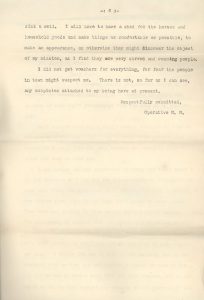http://www.bakersfield.com/columnists/lois-henry-water-districts-split-leaves-groundwater-bank-even-more/article_11e9c9a0-ad11-52ef-b017-121574208ea4.html
By LOIS HENRY
The Bakersfield Californian
March 18, 2017
If all had gone as planned six years ago, the failed McAllister Ranch housing development would be brimming with water right now.
Instead, the two agricultural water districts that had hoped to turn the foreclosed subdivision into a groundwater bank are now in court over the 2,000-acre property.
The whirlwind courtship that brought Rosedale-Rio Bravo and Buena Vista water storage districts together, spending $22 million to buy McAllister out of bankruptcy, is officially over.
Buena Vista filed a partition complaint in mid-January seeking a court-ordered sale of the property.
“We want to dissolve the partnership,” said Tim Ashlock, Buena Vista’s engineer.
Buena Vista felt Rosedale was bogging down the process and no matter how many meetings they had, nothing ever seemed to happen.
I was told last week that Rosedale will recommend that the court preserve the part of the property that can be developed for groundwater banking, sell the remainder and each district can then make their own groundwater banks.
“I can’t say how we differed over the project because (Buena Vista) never communicated that to us,” said Eric Averett, general manager for Rosedale.
Buena Vista wanted to control the project, which wasn’t acceptable, he said.
“We’re disappointed we ended up here,” Averett added. “Of all the years to fragment, we’re really missing an opportunity this year.”
Not just this year.
If climate change predictions come to fruition, groundwater banking may be California’s preferred method of water storage.
Scientists have predicted that climate change will actually increase precipitation over the Golden State but in the form of rain, rather than snow.
California’s plumbing system was created with the idea that the mountains store most of our water each winter in the form of snow.
As it melts in spring, we capture that water in reservoirs and then move it around the state through a series of canals.
But if the future holds less snow and more rain, that plumbing may need to be altered.
Groundwater banking, where water is spread over percolation ponds and allowed to seep into the ground, is considered a critical water management strategy going forward.
In fact, Rosedale has been very active in creating groundwater banks for itself, such as the ponds at Allen Road and the Westpark Freeway.
And what I consider a more dubious relationship Rosedale has with Irvine Ranch Water District, which owns land along the Kern River west of town where Rosedale banks water. (I call it dubious because I’m naturally suspicious of any southern California agencies nosing around our river.)
Buena Vista has recently begun to up its groundwater banking opportunities, buying a 320-acre piece of land near the Tule Elk Reserve west of Interstate 5.
And both districts said they are still interested in developing groundwater banking on the McAllister land as well. Just independent of one another.
Regardless of who ends up with the land, or how things are split up, McAllister may never store a drop of water.
That’s because the City of Bakersfield holds an interest in this little drama as well.
And the city has never been super excited by the idea of ducks floating over that land.
McAllister is zoned for development (which means development fees) and that’s what the city expects for that area.
In fact, housing developer SunCal exercised an option to buy back the middle third of the land, which has streets and some infrastructure, and had made noise in 2014 about restarting the development.
Then… nothing.
The last contact SunCal had with Bakersfield’s Planning Department was in mid-2016, according to Planning Director Jacqui Kitchen.
But there is nothing “active,” she said.
That leaves just the western 600 acres for possible groundwater banking and the city continues to insist it must be the lead environmental agency on any kind of development — whether it’s houses or groundwater banking — on that land.
That little wrinkle was never ironed out with the ag water agencies and the city’s lawsuit over that issue, though dormant, is still out there.
There’s also the little trick of getting water onto the land, which can’t be done without the city’s assistance since Bakersfield owns or controls the canals and pipelines that would be needed to bring water to McAllister.
So, here we sit.
McAllister remains as it was, a dilapidated icon to the busted real estate bubble of the early 2000s, mostly used for illegal off-roading.
Meanwhile, hundreds of acre feet of Kern River water goes splashing by every day just a few miles to the north.
Opinions expressed in this column are those of Lois Henry. Her column runs Wednesdays and Sundays. Comment at http://www.bakersfield.com, call her at 395-7373 or email lhenry@bakersfield.com















